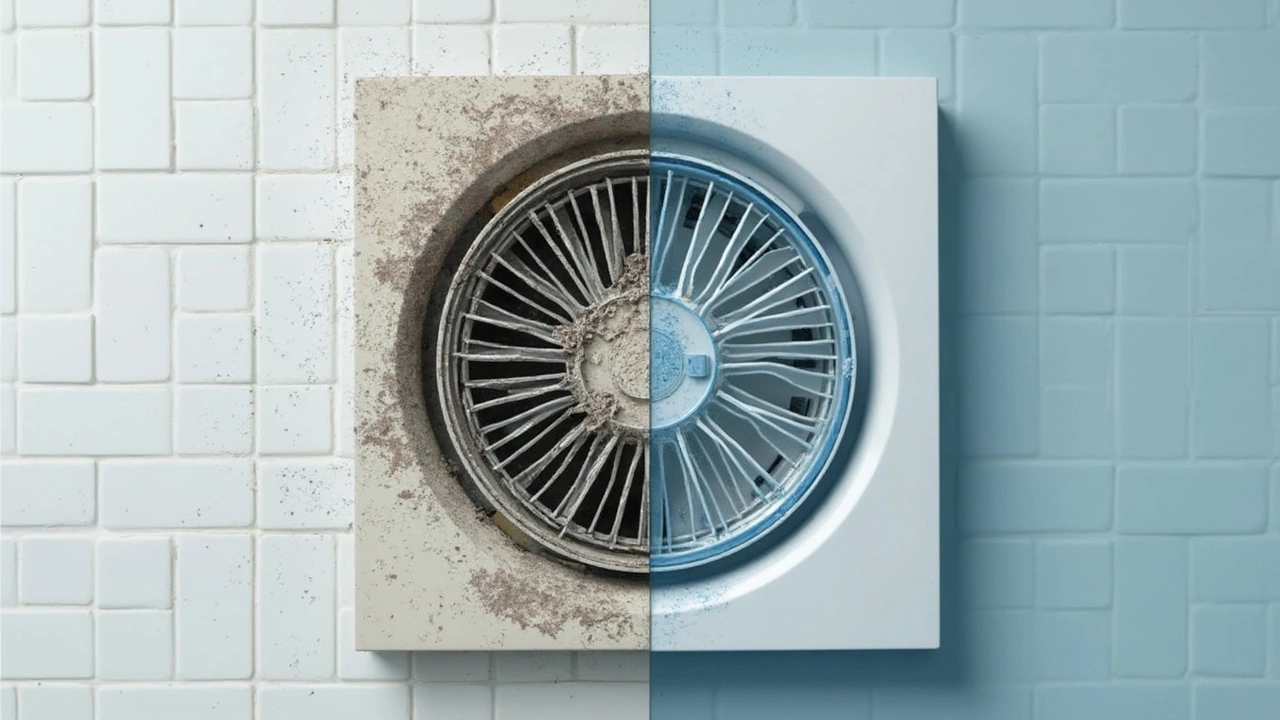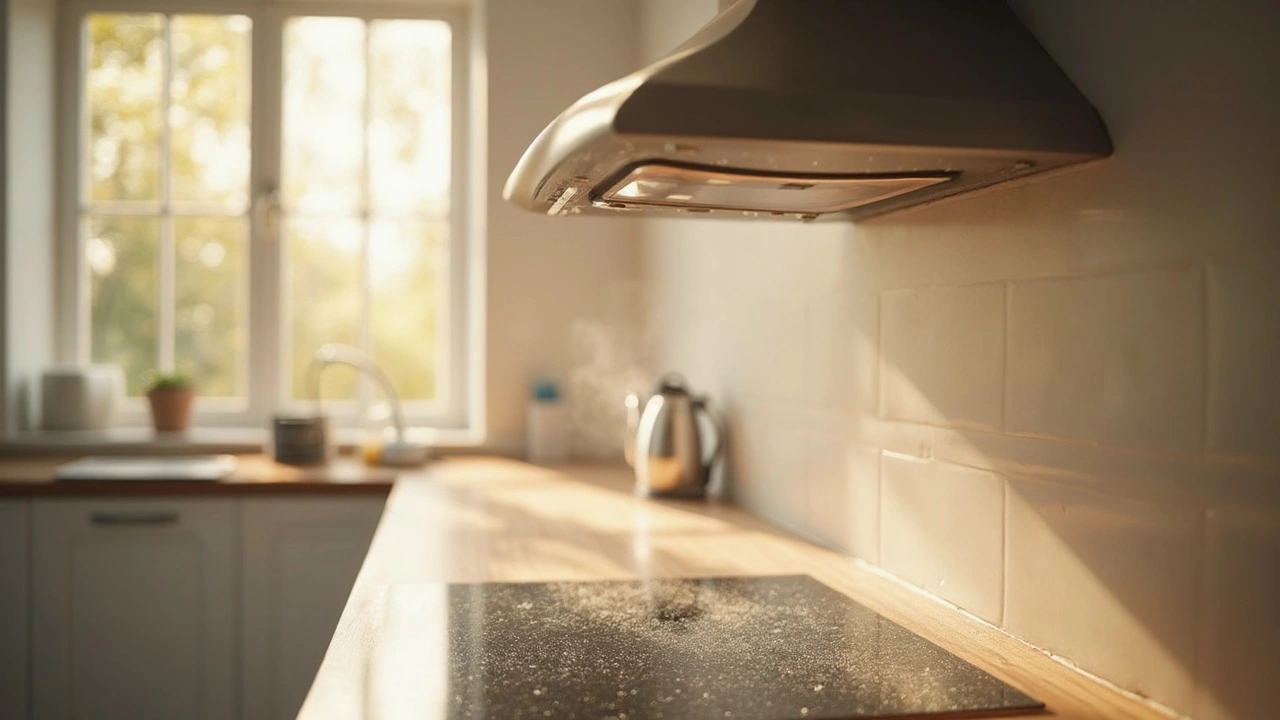Ever walked into a bathroom that smells like last week’s gym bag? Or cooked bacon only to have your kitchen smelling greasy for days? That’s often a worn-out extractor fan screaming for attention. These fans pull out steam, smells, and all the gunk you don’t want lingering. But here’s the thing: if you forget to check and clean them, they quit working right—even before you hear any weird noises.
Most people don’t realize extractor fans get clogged with dust and grease way faster than you’d think. A layer of grime is enough to slow things down, use more energy, and leave your air muggy or smelly. A neglected fan can even trip your power if the motor overheats. If you’ve noticed your fan sounds louder than a jet engine lately, or there’s more moisture on your walls, that’s your cue to pay attention before you end up with mold or costly repairs.
- Why Maintenance Is Essential
- What Happens When You Skip It
- Signs Your Extractor Fan Needs Attention
- DIY Maintenance Tips
- When to Call in a Pro
Why Maintenance Is Essential
Extractor fans do a tough job every day, but a lot of folks don’t give them a second thought until they stop working. A well-kept fan doesn’t just get rid of bad smells—it actually helps get rid of moisture that can lead to mold and even damage your paint or walls. Ignoring upkeep means the fan has to work harder, and that wears down the motor faster, cutting the lifespan of the unit by years.
According to manufacturers, a clean extractor fan can move up to 30% more air than a clogged one. When a fan gets full of dust or grease, it loses efficiency and you end up with higher electricity bills. In some cases, neglected fans have even started fires due to a build-up of lint or grease—especially kitchen fans.
If you want to avoid repairs, routine checks matter. Cleaning and maintaining the fan at least every six months can often double its working years. These simple tasks prevent noisy operation, weak airflow, and that lingering damp feeling after a shower. All in all, looking after your extractor fan maintenance means cleaner air, fewer breakdowns, and more money left in your pocket.
What Happens When You Skip It
Ignore your extractor fan for too long and you’ll pay for it—sometimes literally. When fans get clogged with dust, grease, or lint, airflow drops, and the motor has to work double time to push air out. This leads to higher energy bills and might wear out the motor way faster. For example, some studies say a dirty fan uses up to 30% more electricity than a clean one. That’s not pocket change, especially as energy costs rise.
You’ll also notice that smells, steam, and moisture stick around far longer. This isn’t just annoying—it can make your room feel sticky or stuffy. Even worse, high moisture and bad ventilation set the stage for mold. Mold patches in bathrooms or over a stove aren’t just ugly; they’re a real health risk if you’ve got kids or anyone with allergies.
Not to mention, ignoring maintenance could lead to breakdowns at the worst times. It’s no fun scrambling for an electrician after your fan suddenly shuts off mid-shower or halfway through dinner prep. Plus, a fan overheating or sparking poses a bigger safety risk than most folks think—older fans especially.
"Extractor fans, like any mechanical appliance, need occasional maintenance. People often think, 'out of sight, out of mind,' but neglect is the fastest way to shorten a fan's lifespan and invite expensive repairs." — Mark R. Collins, Certified Home Energy Advisor
Here’s a quick look comparing what happens when you maintain versus neglect your fan:
| With Regular Maintenance | When You Skip Maintenance |
|---|---|
| Quiet operation | Loud, rattling noise |
| Efficient moisture removal | Lingering steam and odors |
| Lower energy costs | 20–30% higher electricity use |
| Longer fan lifespan | Frequent breakdowns, shorter life |
| Safer home environment | Higher fire and mold risk |
Bottom line: regular extractor fan maintenance isn’t just about keeping the air fresh—it’s about safety and saving money down the road.

Signs Your Extractor Fan Needs Attention
Extractor fans have a way of showing us when they’re struggling, you just need to know what to look for. If you catch these signs early, you can avoid bigger problems and head off expensive repair bills.
Here’s how to spot trouble with your fan:
- Noise Increases: If your fan suddenly sounds like a busted hairdryer or starts rattling, that’s a common red flag. A healthy fan should have a smooth, gentle hum—not a clattering or grinding sound.
- Weak Airflow: Hold up a tissue to the grille while the fan is on. If the tissue barely moves, dust, grease, or a stuck motor might be blocking airflow.
- Persistent Smells: Still smelling last night’s dinner or noticing bathroom odors hang around? That usually means the fan isn’t pulling out enough air anymore.
- Visible Dust and Grease: When the grille or blades look fuzzy or sticky, they’re overdue for cleaning. Grease traps around kitchen fans especially fill up faster than you think.
- Moisture and Mold: Foggy windows, paint peeling, or mildew in corners are all signs the fan isn’t doing its job, and extra moisture is being left behind.
- Fan Not Turning On: Sometimes, the fan just won’t respond, which can point to electrical issues, a dead motor, or even a worn-out switch.
Take a look at the numbers. According to one UK home maintenance survey, kitchens with dirty extractor fans were twice as likely to have mold issues. That’s because kitchen fans get clogged the fastest, thanks to all the greasy air from cooking.
| Sign | What It Means |
|---|---|
| Noisy Operation | Build-up or loose parts, often fixed with cleaning or tightening |
| Weak Airflow | Obstructed vents, clogged filters, or motor trouble |
| Bad Smells | Fan not extracting air properly due to blockage |
| Visible Dirt | Fan needs immediate cleaning to work efficiently |
| Moisture/Mold | Poor ventilation, higher risk for wall or ceiling damage |
| Doesn’t Switch On | Possible electrical or mechanical failure |
If you’re running into any of these issues, don’t wait. A quick check and simple maintenance can keep your extractor fan maintenance routine sorted, and your air fresher.
DIY Maintenance Tips
Keeping an extractor fan maintenance routine doesn’t actually take much time. Most folks skip it because they think it’s tricky, but you don’t need fancy tools or special skills. Just a few steps and you’ll have your fan running smoother and quieter—and your air will smell a whole lot better.
Here’s a simple checklist anyone can follow at home:
- Turn Off the Power
Unplug the fan or shut off its circuit at the breaker. Safety first, always. - Remove and Clean the Cover
Gently pop off the front cover. Most snap out or have a couple of screws. Wash the cover in warm soapy water. Grease, dust, and hair love to hide here. - Vacuum Around the Fan Blades
Use a soft vacuum brush to suck up dust from the blades and surrounding areas. If there's sticky buildup, a damp microfiber cloth works great. Be gentle—fan blades can bend easily. - Check for Blockages
Look inside the duct or vent opening. Birds and bugs sometimes wedge in there. A small flashlight is your friend for spotting anything hiding deep inside. - Double-Check the Fan Spins Freely
Once clean, gently spin the blades. If there’s any drag, gunk might still be in there, or the motor might be on its way out. That’s a sign you’ll need more help. - Wipe it Down and Reassemble
Dry every part well, especially before you put the cover back. Fire up the fan and listen—no rattles, no grinding? You’re good.
Some pro tips: Try to do a quick clean every 3-4 months if you use the fan daily, or every 6 months for less busy spots. Kitchens might need more attention because of grease.
If you’re curious about how often people run into issues with dirty fans, check this out:
| Common Problem | Percent of Fans Affected |
|---|---|
| Reduced airflow from dust | 62% |
| Noisy operation (bearing dust) | 41% |
| Mold around fan areas | 37% |
| Fan not switching on | 19% |
A quick brush and wash can prevent most of these headaches. And if you set a reminder on your phone, you probably won’t forget.

When to Call in a Pro
Sometimes, no matter how many YouTube videos you watch, fixing your extractor fan turns into a headache. Simple cleaning and tightening screws is one thing, but there are moments when it's just safer, smarter, and cheaper to let a professional handle it.
If you notice any of these problems, that’s your sign to put down the screwdriver and pick up the phone:
- Extractor fan maintenance hasn’t helped and persistent issues remain, like a fan that refuses to turn on, stays noisy, or gives off weird smells (think burning or a plastic smell).
- There’s no power to the fan and you’ve checked the circuit breaker and wall switch.
- The wiring inside the fan looks burnt, melted, or loose. Messing with electricals is a bad idea without training.
- You spot water dripping from the fan. That’s a sign of possible leaks or blocked ducts—stuff you don’t want to ignore.
- The fan blades are damaged or the motor sounds like it’s going to give out entirely.
- It’s still under warranty, because DIY repairs can void it right away. Always double-check your paperwork.
Some stats might help you decide: according to a 2023 survey of UK electricians, 65% of extractor fan failures were linked to electrical faults, not just dirt build-up. Plus, 18% of repair callouts were for water damage around bathroom fan units.
| Problem | DIY Possible? | Pro Needed? |
|---|---|---|
| Cleaning Dust/Grease | Yes | No |
| Noisy Fan | Maybe | Yes (if persists) |
| Electrical Smells/No Power | No | Yes |
| Water Leaks | No | Yes |
| Broken Motor | No | Yes |
Don’t forget: a professional isn’t just for repairs. If you want your fan upgraded or installed in a tricky spot (like an older building with weird wiring), hiring a pro keeps things safe and up to code. It beats gambling with your safety and your wallet.


